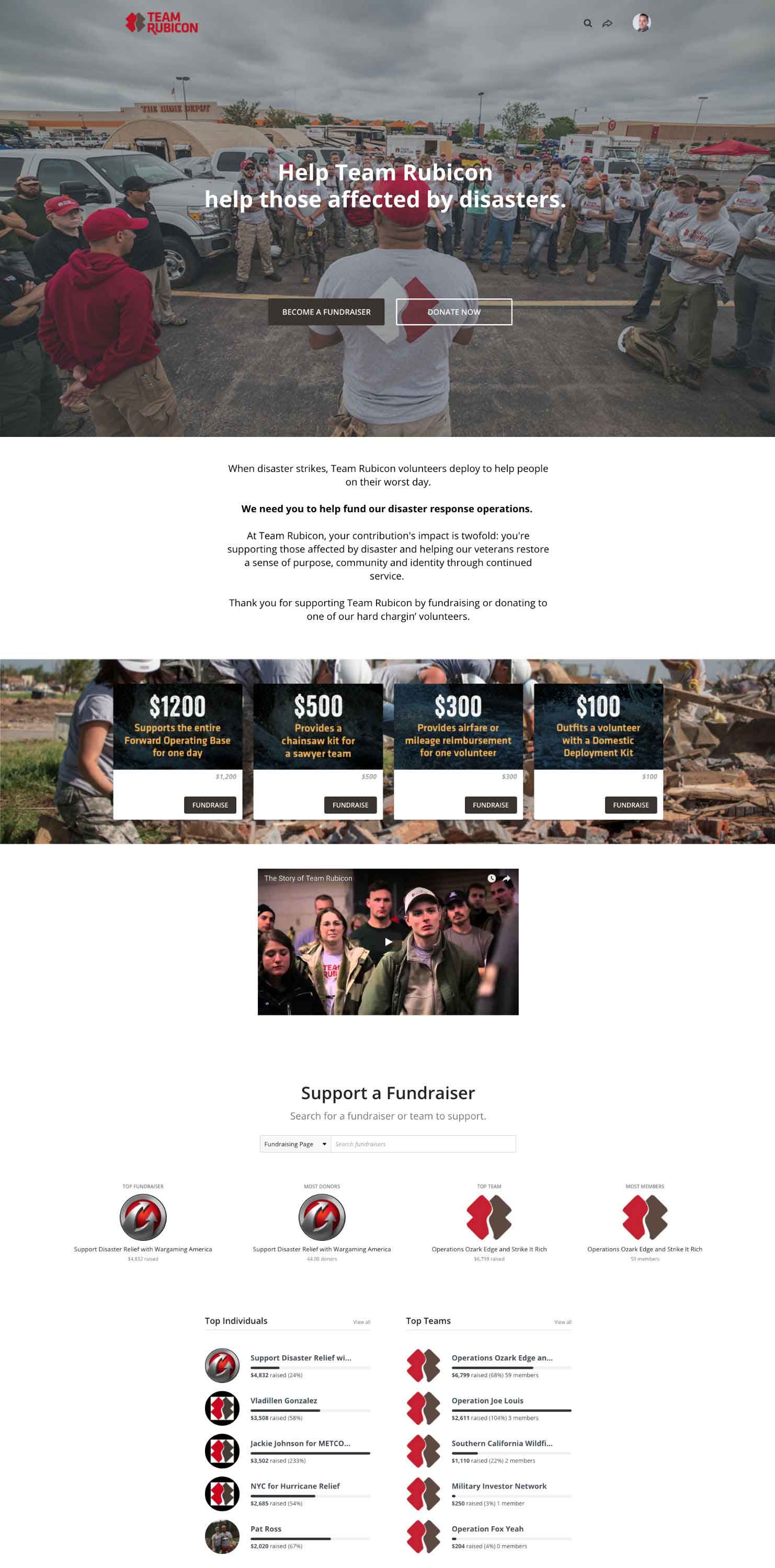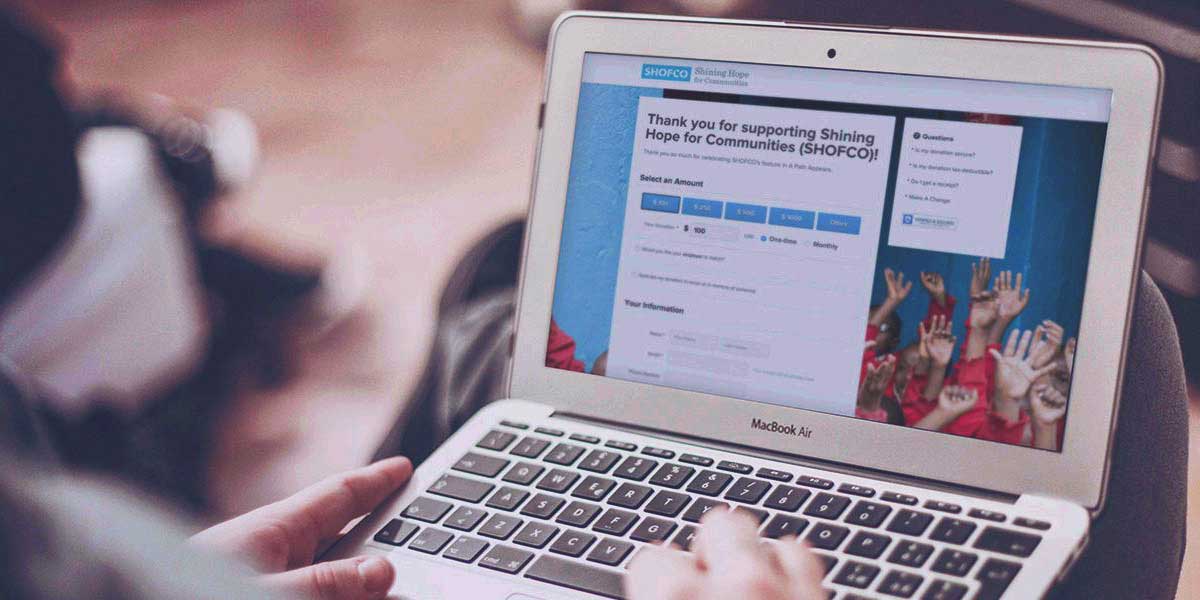Are You Preventing People From Fundraising for Your Nonprofit?

When Southern California dealt with a recent wildfire outbreak, there were countless people, animals, families, and towns displaced by the disasters. In response, a large number of people wanted to help those in need through emergency fundraising efforts.
Brad Chrisakis, product enablement at Classy and Los Angeles native, was one such person who wanted to do his part to help the emergency fundraising and the victims of these fires. At his first opportunity, he reached out to multiple organizations asking if he would be able to peer-to-peer fundraise to support relief efforts.
During his outreach though, Brad was met with a series of roadblocks that made it difficult to fundraise and make his impact felt. In fact, most nonprofit websites failed to clarify whether the organization was helping those affected by the fires, give information on how to support the cause, or offer options for people to fundraise.
We met with Brad to get the full story and discuss the opportunity here for nonprofits. Below are strategies and tips for how you can offer supporters a way to make their voices heard as well as make a strong impact through peer-to-peer fundraising.
Solving the Problem of Visibility
At the very base level, people who want to support your cause need to be able to find you, and then understand how they can participate in your efforts.
When Brad first began his search for organizations helping with the Southern California wildfires, this lack of visibility slowed him down. Understandably, he was frustrated with the shortage of information.
“What I was looking for was something that very clearly said, ‘You can fundraise year-round for us, but right now our efforts are focusing on the Southern California wildfires.’ Instead, I found organizations that weren’t explicitly stating if they were supporting wildfire relief, and if they were, how they were doing so.”
If you’re supporting a cause that attracts attention in the moment, like the Southern California wildfires, it’s crucial that you make your commitment to the cause widely known. Explicitly spell out for incoming supporters what you’re doing, how you’re doing it, and how they can help.
It’s also important to pay attention to the number of inquiries you’re getting about supporting a specific cause. For instance, when a noticeable number of people ask if you’re deploying resources to provide emergency fundraising relief, that could be an indicator that your organization should mobilize and take action.
And aside from creating a campaign, there are plenty of other ways you can assist these supporters looking for ways to get involved:
- Write a quick blog post about the ways you’re supporting the cause
- Share social media posts with links to campaigns
- Partner with reputable names to spread awareness for your campaign
Baked into all of this is the underlying strategy to be proactive versus reactive. It’s not enough to simply create a “fundraise” button on your page and expect people to sign up.
Plan to Be Proactive
Brad ended up reaching out to a Classy client, Team Rubicon, that has a reputation for helping out during natural disasters. He asked if they were going to respond to the fires, and they told him yes.
However, they didn’t have an active peer-to-peer campaign for the fires. Instead, they told him they would create a team page for him so he could immediately start his emergency fundraising efforts.
The reason Team Rubicon was able to do this so quickly and seamlessly is because of their creative campaign planning and structure. They have a year-round DIY fundraising campaign where they can create new team peer-to-peer fundraising pages for their various operations across America.

It was under this umbrella that they created the Southern California wildfires page for Brad when he reached out to them. This is a prime example of how you can set your own organization up for proactive success in the real world.
“I’ve fundraised for Team Rubicon three times now because they make it easy, and they always are willing to create opportunities like this for their supporters.”
According to Brad, if you can’t offer your options like this, it can be discouraging to your supporters. Some people, who can’t donate a lot of money, may feel that they aren’t able to make an impact for a cause that’s important to them.
“Could I find an organization and give them $200? Sure, but I know I can also fundraise well beyond that one-time donation and make an even bigger impact. So, as a supporter, I always look to fundraise first above anything else.”
In only three days, Brad was able to raise $1,100 for Team Rubicon’s Southern California wildfire relief efforts—well beyond a $200 one-time donation.
Use the Right Tools
Getting the word out about your emergency fundraising efforts and drawing in supporters to your cause is only the first part of the battle. The second part is ensuring that people successfully fundraise to help out.
A big part of that is having the right tools at your disposal to set your supporters up for success like Team Rubicon did with Brad. However, there are also tips you can pass along to supporters to help them spread the word about their campaign, and by extension your campaign.
For example, Brad recommends you encourage your fundraisers to tap into their social networks, like Facebook. While asking for a donation is always a great place to start, he adds that it’s important you provide options for people who can’t donate. Ask them to either donate or share the appeal with their networks.
Brad used this tactic when fundraising for Team Rubicon’s wildfire relief, and he saw some exciting results. One of Brad’s friends didn’t donate, but he shared the post to his own social media networks.
Soon after, Brad received a $100 anonymous donation that mentioned seeing the post on this friend’s page. The anonymous donor had been looking for a way to give back to Team Rubicon after they helped him during Hurricane Harvey.
If people are hungry for success, feed them the right resources, tips, strategies, and tactics to succeed. Send your fundraisers some of our top resources designed just for them, like the following guide:
Send This Guide to Your Fundraisers So They Can Crush Their Goals
What’s at Stake?
“Sometimes an organization will look at all they have and think things are good. They don’t look at what they’re potentially missing out on by not maximizing their fundraising reach.”
Whether it’s for an unplanned natural disaster campaign, or for a planned campaign that isn’t timely, you need to be ready to empower your supporters. If you don’t have the tools and processes to enable them to begin emergency fundraising on your behalf, you miss out on far more than a one-time donation or a new fundraiser.
You miss out on the Brads of the world, and without them, so too do you miss out on the people who donated to their fundraising pages. You can’t re-engage them for future efforts if they never gave in the first place.
In that light, you miss out on an entire new cohort of donors, their future support, and anybody in their network who might have seen them fundraising for your organization.
This line of thinking applies to nonprofits of all sizes. Small organizations need to implement tools that help them attract, engage with, and steward supporters. Large ones need to assess their online platforms to see if they’re outdated and blocking access to fundraising opportunities.
There are many things we can take away from Brad’s experience searching for, and finding, an organization to fundraise for during the Southern California wildfires. Chief among these takeaways is that the reason he chose Team Rubicon was that they offered him an opportunity to fundraise.
Beyond that, Team Rubicon’s foresight and planning made it incredibly easy for Brad to get set up and fundraising quickly. Try to anticipate the needs and wants of someone in Brad’s shoes—an individual who is passionate about your cause and wants a way to fundraise for your organization.
That way, you can plan ahead to provide a clear-cut pathway to help, not when you want them to but when they want to. And remember to send your fundraisers the guide below to help them crush their goals on the road to success.

How to Raise Money for the Causes You Love
Subscribe to the Classy Blog
Get the latest fundraising tips, trends, and ideas in your inbox.
Thank you for subscribing
You signed up for emails from Classy
Request a demo
Learn how top nonprofits use Classy to power their fundraising.



